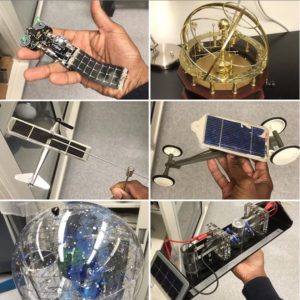News from the Front, XVIII: de Sitter Black Holes and Continuous Heat Engines
[caption id="attachment_19313" align="alignright" width="250"] Hubble photo of jupiter’s aurorae.[/caption]Another title for this could be “Making sense of de Sitter black hole thermodynamics”, I suppose. What I’m going to tell you about is either a direct correspondence or a series of remarkable inspiring coincidences. Either way, I think you will come away agreeing that there is certainly something interesting afoot.
Hubble photo of jupiter’s aurorae.[/caption]Another title for this could be “Making sense of de Sitter black hole thermodynamics”, I suppose. What I’m going to tell you about is either a direct correspondence or a series of remarkable inspiring coincidences. Either way, I think you will come away agreeing that there is certainly something interesting afoot.
It is an idea I’d been tossing around in my head from time to time over years, but somehow did not put it all together, and then something else I was working on years later, that was seemingly irrelevant, helped me complete the puzzle, resulting in my new paper, which (you guessed it) I’m excited about.
It all began when I was thinking about heat engines, for black holes in anti-de Sitter, which you may recall me talking about in posts here, here, and here, for example. Those are reciprocating heat engines, taking the system through a cycle that -through various stages- takes in heat, does work, and exhausts some heat, then repeats and repeats. And repeats.
I’ve told you the story about my realisation that there’s this whole literature on quantum heat engines that I’d not known about, that I did not even know of a thing called a quantum heat engine, and my wondering whether my black hole heat engines could have a regime where they could be considered quantum heat engines, maybe enabling them to be useful tools in that arena…(resulting in the paper I described here)… and my delight in combining 18th Century physics with 21st Century physics in this interesting way.
All that began back in 2017. One thing I kept coming back to that really struck me as lovely is what can be regarded as the prototype quantum heat engine. It was recognized as such as far back as 1959!! It is a continuous heat engine, meaning that it does its heat intake and work and heat output all at the same time, as a continuous flow. It is, in fact a familiar system – the three-level maser! (a basic laser also uses the key elements).
A maser can be described as taking in energy as heat from an external source, and giving out energy in the form of heat and work. The work is the desired […] Click to continue reading this post



























